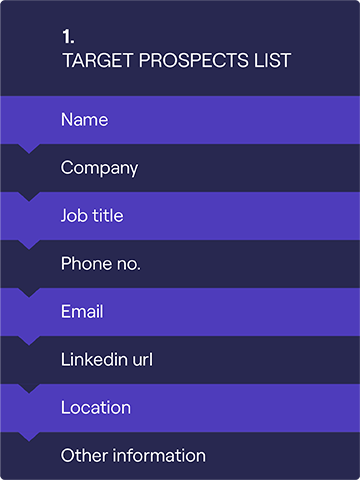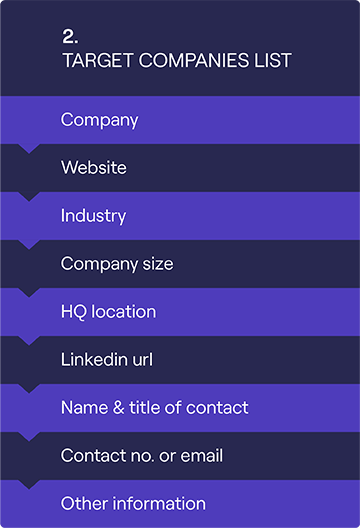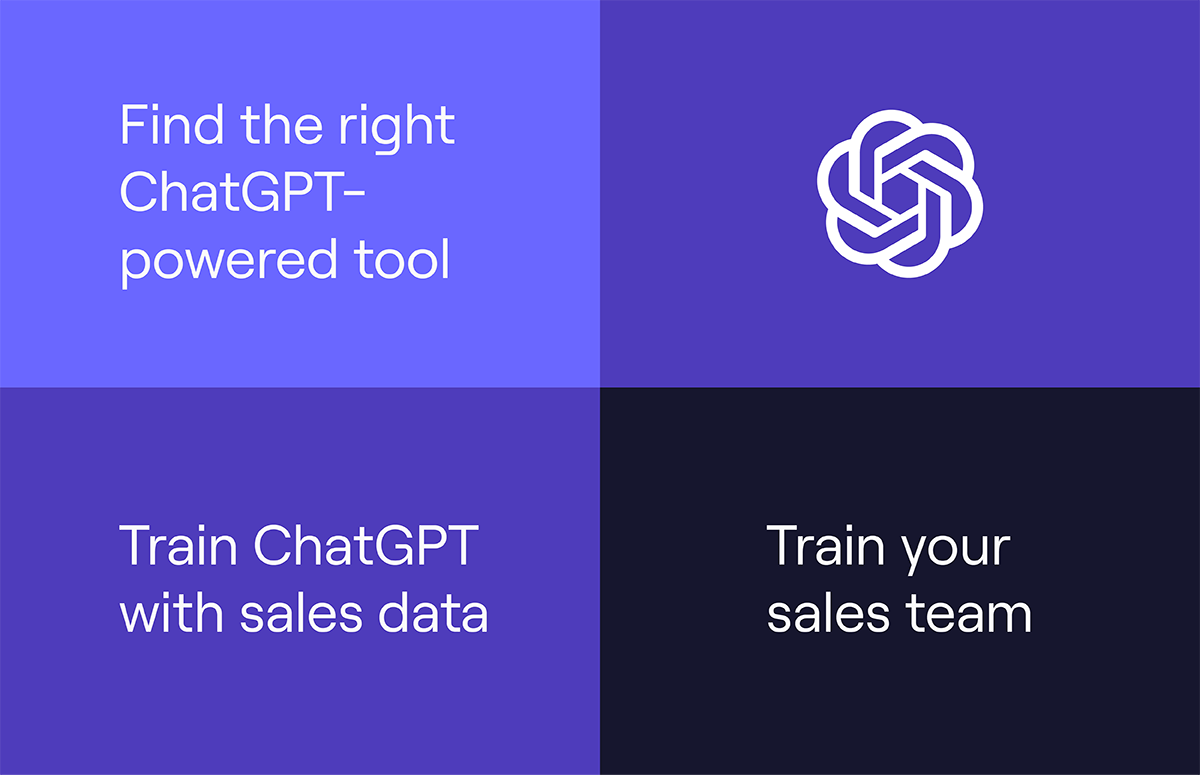Creating a Winning Sales Prospecting List: Template & Guide for 2024
There’s no shortcut to scaling a B2B business.
But there are methods you can use to support the process, like creating a prospecting list.
Think about this:
If you don’t have customers, you won’t have revenue.
Building a list of names, contact details, and other vital information is an important first step in generating and growing a successful B2B business.
In this article, we’re going to deliver a crash course in building a sales prospecting list.
Topics covered include:
- Steps to building a valuable prospecting lead list for sales and marketing
- Reasons why creating your own list is always better than buying one
- A free downloadable template to prospect successfully
What is a prospect list in sales?
Prospecting lists are datasheets filled with the names and contact details of potential customers. These can be mobile contact lists or email lists. B2B sales teams use these lists to contact customers that they know will fit their ICP.
Since these lists contain information on pre-qualified and highly targeted leads, sales reps are more likely to convert and maintain positive relationships with customers, as opposed to cold calling random numbers at will.
For B2B prospecting lists to be successful, you’ll need quality, compliant B2B data that’s valid and up to date. This ensures your sales team has all the information they need to succeed.
Additionally, you can enrich your prospecting list with intent data and sales triggers to prioritise prospects that are in-market.
💡 Have a look at Cognism’s pricing to get started building your perfect list of prospects
How do you build a prospecting list?
There’s much more to a professional prospecting list than just figuring out who your SDRs should be connecting with. Your list needs to be accurate, relevant and compliant for the best success.
An up-to-date B2B prospecting list is going to save your team time, lower your cost of customer acquisition (CAC) and assist in building better client relationships for improved customer lifetime value (CLTV) and reduced churn.
Nowadays, companies use sales prospecting tools for generating B2B prospecting lists on demand. It allows sales and marketing teams to grow a qualified customer base and increase revenue quickly.
How quickly?
Here's an example from THG Ingenuity Cloud Services:
With a B2B contact database like Cognism, you can start building a targeted sales prospecting list in your ICP faster. First, refine your search by applying various filters, such as locations, industries, and even event triggers. Then you can export the list with prospects' phone numbers and emails to your CRM.
It's also a good idea to calculate your Total Addressable Market (TAM) and establish sales goals before you start list building. This will ensure your team creates a hyper-targeted list that consists of only the most qualified prospects.
6 steps for creating a successful sales prospecting list
Keep in mind that developing a sales contact list shouldn’t be slap-and-dash. Rather stick to the following six steps that’ll be sure to support any prospecting plan:
4. Collect and update your data
1. Learn your product backwards
Coming up with a good sales prospecting plan all depends on understanding what you're selling. You need to know how your product can help a customer solve pain points, and in turn, this will inform you of who your ideal customer profile (ICP) is.
Start by taking a look at your most valuable customers:
👉 Who are they, and why do they enjoy your product?
If you’re a new SDR, then you’ll need to surpass the basics when it comes to understanding the product you’re selling. Study use cases, watch Gong calls and do a deep dive into success stories.
A better understanding of your product won’t only do wonders for the way you sell, but it will help you understand what factors drive buyers to make purchases.
2. Build a buyer persona
Once you understand what you’re selling, you’ll need to establish which prospects are best to target. This will also help you define your sales prospecting list format.
Take everything you’ve learned about your product and define your ideal customer - our TAM calculator can help.
After this, start researching:
- Who are these prospects?
- Where do they work?
- What roles will be best to reach out to etc.?
Then create a buyer persona to use when outreaching these sales lead prospects.
A well-defined buyer persona not only improves the success of your sales process but also helps you get into the minds and hearts of your customers to understand their needs better.
3. Invest in a CRM
There’s no formatting rule when building a prospecting list. Anything goes from VCF and CSV files to Excel and Google Sheets. However, having a contact list spreadsheet, while cost-effective, can be time-consuming and result in errors.
Investing in sales automation like a CRM can help you avoid human error, save time and update and clean your data easily.
Salesforce, Pipedrive and Zoho are some popular CRM software examples.
4. Collect and enrich contact data
Now, it’s time to start populating your prospecting list for sales development. Start by cleaning your existing customer records by removing any phone numbers and emails that are out of date.
You can use a sales intelligence solution like Cognism or ZoomInfo to check what data is still relevant and to enrich your database with fresh new contacts.
Enrich and clean your sales prospect lists with Cognism
💡Check out this interactive workflow if you need help figuring out how to collect and enhance your data.
5. Create lead generation campaigns
Other than investing in a data provider, your prospecting list strategy should include collecting new contacts via B2B marketing campaigns, website forms, webinars, organic SEO, and newsletter sign-ups.
Lead generation campaigns run through paid advertising via lead sources like LinkedIn, Facebook, and Google can help you generate the most new contacts.
Be sure to include a CTA that encourages data sharing, such as providing contact details to download a free eBook, guide, or template.
6. Implement lead scoring
Once you’ve collected enough marketing data through your prospecting activities, analyse and categorise the leads you’ve collected. Then, add the most relevant leads to your sales follow-up prospecting list.
Using lead scoring, you can categorise your sales leads on any factors you think are relevant such as the level of their intention to buy, the size of the company, the value the account will bring to your business etc.
To build or buy, that is the question
When it comes to B2B sales prospecting lists, many business owners think buying leads is easier than creating a data list of their own.
But this isn’t the case when you have a quality data provider to help ensure your prospect information is up to date, GDPR compliant and accurate.
In fact, buying phone number lists or purchasing email lists from unreliable sources can work out to be more trouble than they’re worth.
Inaccurate prospecting lists waste sales reps’ time and lead to missed opportunities. They can even result in hefty fines and penalties if the prospect list contains incompliant data, e.g. person you’re contacting is on a do not call list.
Buying cheap lists for prospecting instead of investing in a prospecting tool might be tempting for businesses with tight budgets.
Sales on Demand used Cognism’s compliant data to build its perfect business sales list. They said:
“My list-building time has decreased by 99.5%. If Cognism disappeared, I’d have to hire someone to do it, which involves the added expenditure of paying a salary.”
"Cognism not only saves a tremendous amount of time, but it also reduces overhead costs. As a small business, this is huge.”
Learn more about intelligent list building to ensure success across all your prospecting activities in this video☝️
Free SDR prospecting list templates
The best way to create a prospecting list is to start with a template. We’ve created two versions to help you get started.
Right-click and save these sample prospecting lists for when you create your own👇
1. Target prospects list
2. Target companies list
Start building your winning prospecting list
Build the best sales prospecting list with Cognism and break performance records month-on-month!
With Cognism, you’ll have access to:
- Buyer intent data and sales trigger events
- Unlimited views and unrestricted individual and page-level exports
- Quality GDPR-compliant B2B data
- Diamond Data® - phone-verified contact data
Ready to start connecting with your perfect customers? Click 👇 to book your demo.
Build targeted prospecting lists with Cognism's company & contact data.
B2B emails & 2x more mobile numbers than other providers.




